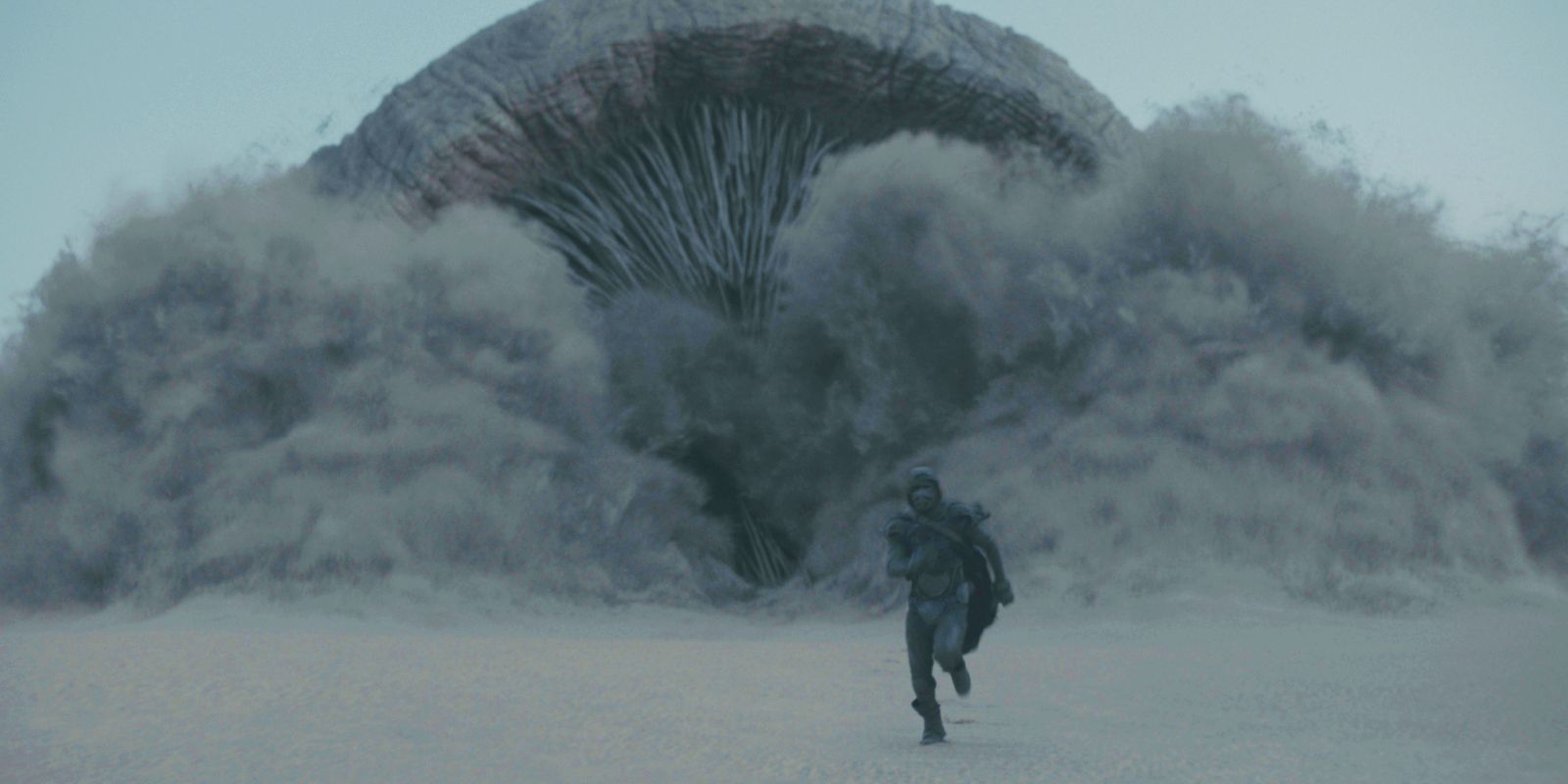A behind-the-scenes featurette for Dune reveals how the film's sandworms were designed and brought to life. The sci-fi epic debuted this past October in theaters and on HBO Max, posting an opening strong enough for Warner Bros. to quickly greenlight the development of Dune: Part Two which is currently slated for an October 20, 2023, release. Dune is also up for a slew of Academy Awards this year, including Best Picture, Best Sound, and Best Visual Effects, though its visionary director Denis Villeneuve was snubbed.
Other than its technical aspects, a large part of Dune's success is owed to its incredible ensemble cast, led by Timothée Chalamet as the main protagonist Paul Atreides, Oscar Isaac as his father Duke Leto Atreides, and Rebecca Ferguson as his Bene Gesserit mother Lady Jessica. Stellan Skarsgård is nearly unrecognizable as the main antagonist, Baron Vladimir Harkonnen. Dune also stars a number of high-profile actors in smaller roles, some of which will get more screen time in Part Two, including Zendaya and Dave Bautista. In Dune, characters are often tasked with traveling through the treacherous sands of Arrakis, which are littered with giant sandworms.
In a newly released behind-the-scenes featurette from Warner Bros. Pictures, Villeneuve and his talented team of producers and visual effects artists shed some light on how Dune's sandworms were designed and brought to life. The director says, first and foremost, they designed the beasts with biology in mind, and his team spent months researching what a giant sandworm's real-world mechanics might look like. Watch the BTS video below:
Click here to watch the video.
The sandworms play an important role in both Frank Herbert's 1965 novel and Villeneuve's cinematic adaptation. The giant creatures are native to the desert planet of Arrakis and are responsible for the production of the highly prized resource known as spice, or melange, a drug that can be inhaled by humans to gain powers of prescience. Due to how integral they are to the plot of Herbert's novel, the worms will likely return for Part Two. Perhaps a certain character will even be seen riding a giant sandworm.
In the book, sandworms can grow up to 9,000 feet long and several hundred yards wide, which presented unprecedented challenges for the film's VFX team. Due to the incredible feat Dune's animators were tasked with when bringing the sandworms to life, the film could be considered the frontrunner for the Best Visual Effects. Tune into the Academy Awards on March 27 to see if Dune can take home Oscar gold in that category, and many more.
Source: Warner Bros.


